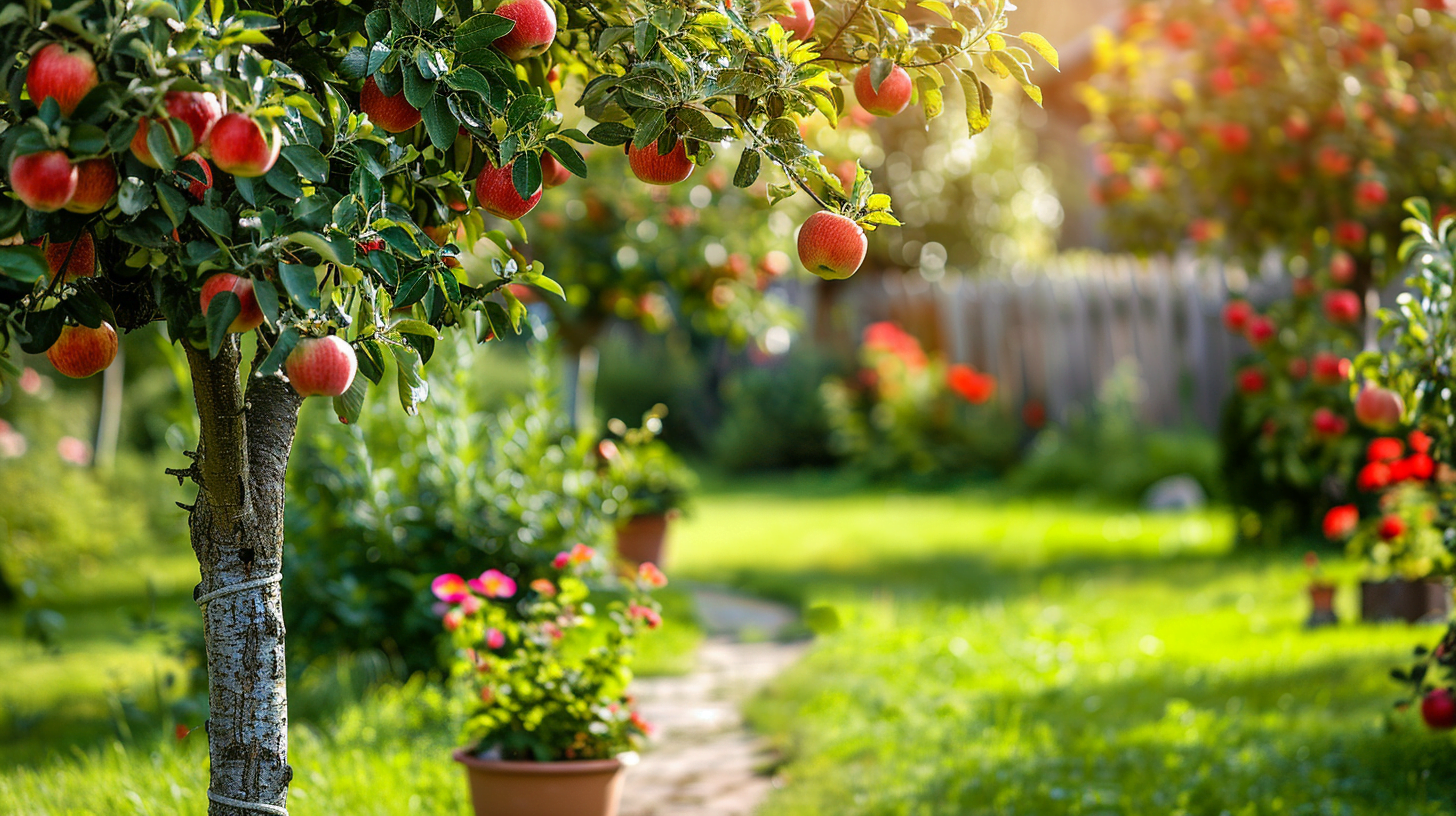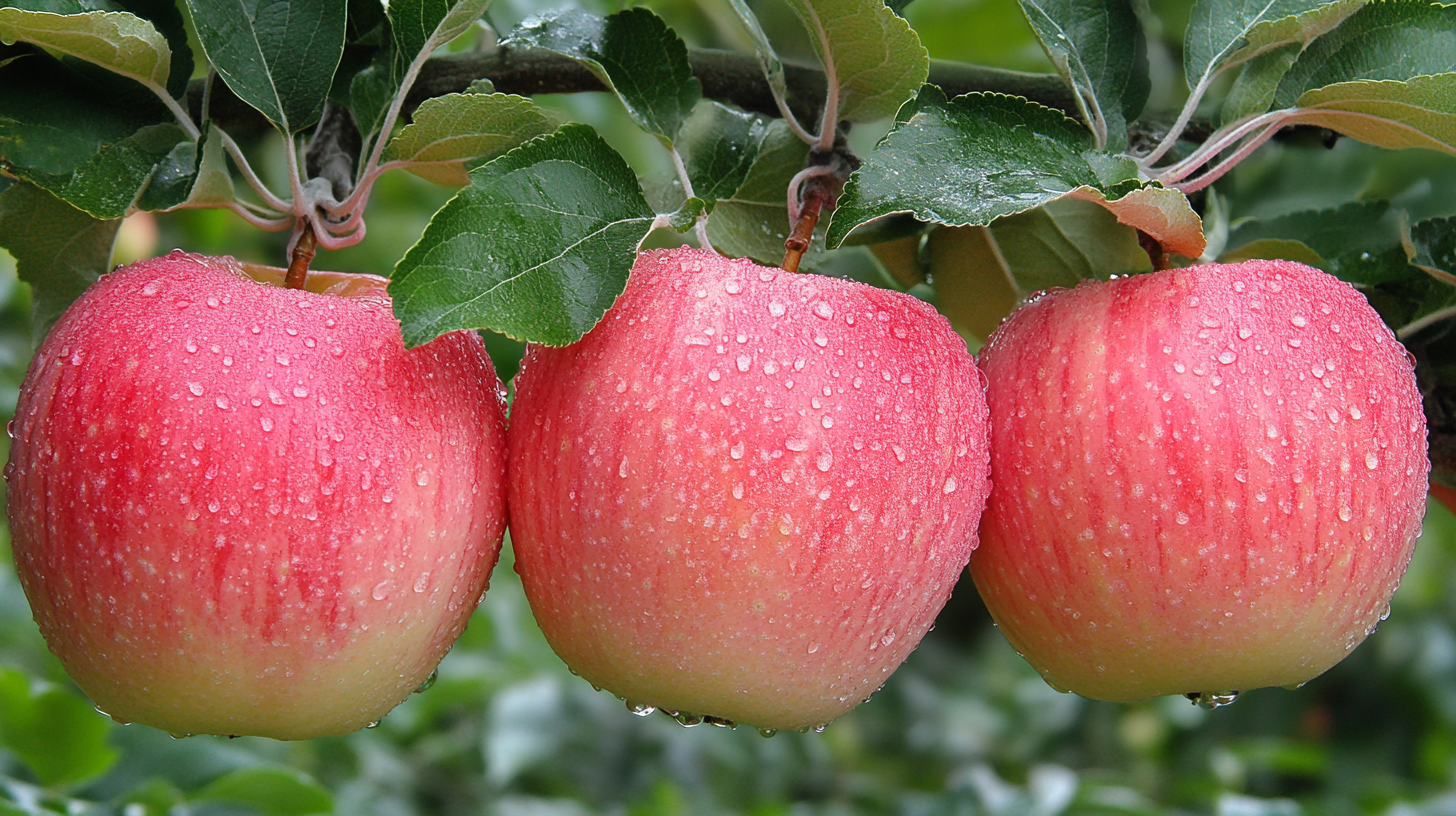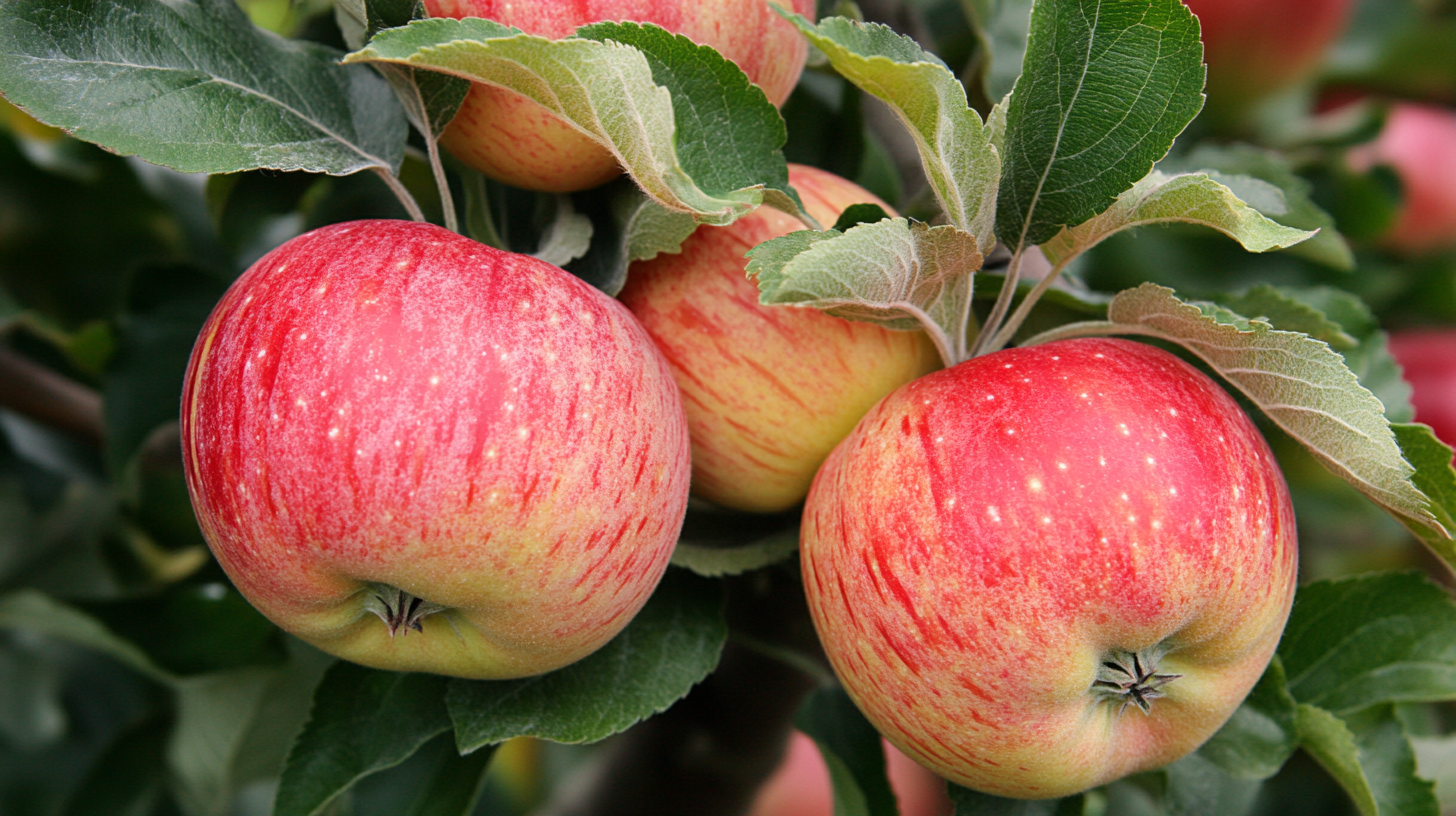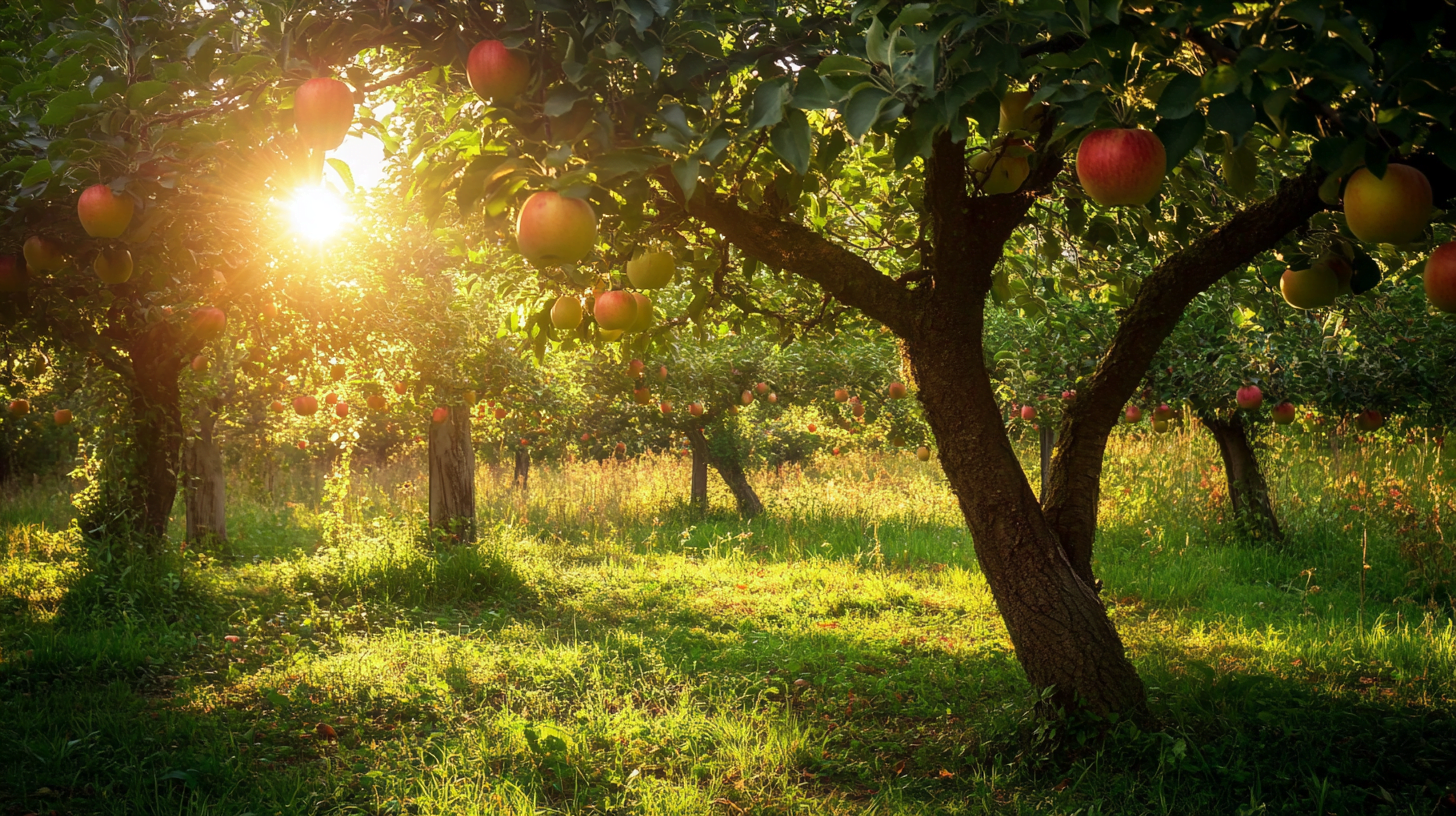Beautiful Plants For Your Interior

Table of Contents
Introduction
Apple trees are a beloved addition to many gardens and orchards, providing delicious fruit and beautiful blooms. However, to ensure your apple tree remains healthy and productive, regular trimming is essential. Proper trimming can improve fruit quality, promote tree health, and create a more attractive tree structure. In this comprehensive guide, we’ll walk you through the process of trimming your apple tree, from understanding its growth patterns to mastering the techniques that will keep your tree thriving for years to come.
Understanding Apple Tree Growth
Before you begin trimming your apple tree, it’s crucial to understand its growth patterns. Apple trees have a central leader, which is the main trunk that grows vertically, and lateral branches that grow outward from the leader. The tree also produces fruiting spurs, which are short, stubby branches that bear fruit. Knowing these different parts of the tree will help you make informed decisions when trimming.
When to Trim Your Apple Tree
The best time to trim your apple tree is during its dormant period, typically in late winter or early spring before new growth begins. This allows the tree to heal quickly and minimizes the risk of disease or pest infestation. Avoid trimming your tree in the fall, as this can stimulate new growth that may not harden off before winter, making the tree more susceptible to damage.
Tools Required for Trimming an Apple Tree
To trim your apple tree effectively, you’ll need the following tools:
- Pruning shears: For cutting small branches up to 3/4 inch in diameter
- Lopping shears: For cutting branches up to 1 1/2 inches in diameter
- Pruning saw: For cutting larger branches
- Pole pruner: For reaching high branches without using a ladder
Make sure your tools are sharp and clean to ensure clean cuts and minimize the risk of disease transmission.
Preparing to Trim Your Apple Tree
Before you start trimming, take a moment to assess your tree’s overall health and structure. Look for any dead, diseased, or damaged branches that need to be removed. Also, consider your trimming goals: are you focusing on fruit production, tree health, or aesthetics? Having a clear plan in mind will help guide your trimming decisions.
Trimming Young Apple Trees
When trimming young apple trees, your main goal is to establish a strong framework for future growth. This involves training the tree to have a central leader and well-spaced lateral branches. To do this:
- Select the strongest, most vertical shoot to be the central leader
- Remove any competing shoots
- Choose four to six evenly spaced lateral branches to form the tree’s scaffold
- Remove any other branches that are crowding or crossing the scaffold branches
Trimming Mature Apple Trees
For mature apple trees, your trimming goals will shift to maintaining tree health, promoting fruit production, and improving aesthetics. To achieve these goals:
- Remove any dead, diseased, or damaged wood
- Thin out crowded or crossing branches to improve air circulation and sunlight penetration
- Remove water sprouts (vigorous vertical shoots) and suckers (shoots growing from the base of the tree)
- Cut back the previous year’s growth by about one-third to encourage fruiting spurs
| Trimming Technique | Purpose |
|---|---|
| Thinning cuts | Remove entire branches back to their point of origin to open up the canopy |
| Heading cuts | Cut back a branch to a healthy bud or lateral branch to control size and shape |
| Bench cuts | Remove vigorous upright shoots back to a lateral branch to maintain tree structure |
Common Mistakes to Avoid When Trimming Apple Trees
To ensure your apple tree stays healthy and productive, avoid these common trimming mistakes:
- Over-pruning: Removing too much of the tree’s canopy can stress the tree and reduce fruit production. Aim to remove no more than 25% of the tree’s live wood in a single year.
- Improper cutting techniques: Always make clean cuts at a 45-degree angle just above a bud or lateral branch. Avoid leaving stubs or ragged cuts, which can invite disease and pests.
- Neglecting to trim regularly: Consistent annual trimming is essential for maintaining tree health and structure. Don’t let your tree go too long without a trim, as this can lead to overgrowth and make the job more difficult.
Caring for Your Apple Tree After Trimming
After trimming your apple tree, properly dispose of the trimmed branches to minimize the risk of disease spread. Monitor your tree for signs of stress or damage, and provide adequate water and nutrients to support healing and new growth. A layer of organic mulch around the base of the tree can help retain moisture and suppress weed growth.

Frequently Asked Questions About Trimming Apple Trees
- How much should I trim off my apple tree each year?
Aim to remove no more than 25% of the tree’s live wood in a single year to avoid stressing the tree. - Can I trim my apple tree in the summer?
While summer trimming can be done to remove water sprouts or diseased branches, it’s best to save major trimming for the dormant season. - How do I know if I’m trimming my apple tree correctly?
If your tree has a strong central leader, well-spaced lateral branches, and a balanced canopy with good air circulation and sunlight penetration, you’re on the right track. - What should I do if I accidentally damage my apple tree while trimming?
If you accidentally make a bad cut or damage the bark, clean up the wound with a sharp knife and apply a tree wound dressing to prevent infection.
Conclusion
Trimming your apple tree may seem daunting at first, but with a little knowledge and practice, you’ll be able to keep your tree healthy and productive for years to come. Remember to trim during the dormant season, use proper tools and techniques, and avoid over-pruning or neglecting your tree. By following the tips and techniques outlined in this guide, you’ll be well on your way to enjoying bountiful harvests of delicious, homegrown apples.


